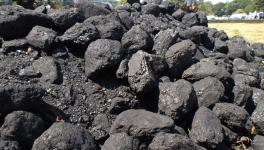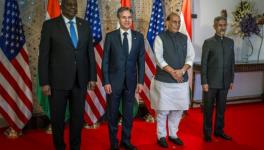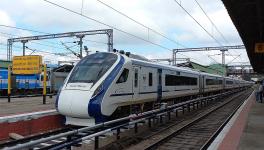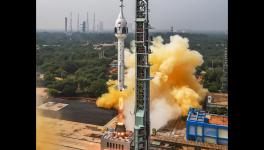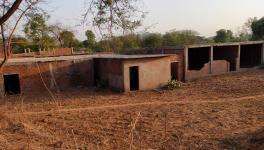Bullet Trains: Bad Idea for India
Prime Minister Narendra Modi is notoriously fond of flashy mega projects whose value seems to lie not in any intrinsic merits, but in their audacious scale and in what they proclaim about his vision, authority and leadership capability. The huge statue of Sardar Patel in Gujarat under then Chief Minister Modi is a good example.
A favourite Modi idea, highlighted in the BJP manifesto, is to introduce bullet trains in India. Not just in one or two small stretches as has been contemplated of and on earlier, but in a vast 6000km long “diamond quadrilateral” (like the “golden quadrilateral” of highways initiated by the Vajpayee-led NDA government in the late nineties) going around the country, a huge and dramatic infrastructure project that would loudly project national pride and India’s march towards the front ranks of advanced economies.
Beyond the hype and hubris, however, a closer look at ground realities in India, and experience of other countries with High Speed Rail (HSR), would show that extensive bullet train networks in India are a bad idea at this stage of its development. HSR in India would be a massively expensive white elephant involving enormous public expenditure that India can ill afford, detracting from badly needed public investment in social infrastructure and poverty eradication, while benefiting only international corporates, local contractors and cronies, and a small number of “aspirational” elites indulging in luxury travel. HSR would merely be a symbol of a new version of “Shining India.”
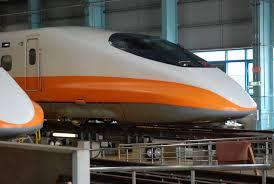
Image Courtesy: en.wikipedia.org
People may need convincing that this judgment is not an ideological pre-disposition or a knee-jerk opposition to something assumed to be a fancy super-toy. In fact, skepticism about HSR in India is widely shared by many transportation experts, financial institutions, sections of the pink press and even by renowned HSR engineering companies based on assessments of costs, ridership, possible ticket prices, viability and societal benefits.
Completely New Infrastructure
Most readers would be broadly familiar with bullet trains or High Speed Rail (HSR), but may not be too clear about its technical definitions. Although HSR is defined in multiple ways in different countries, the most widely accepted definitions are derived from the EU Directive 96/48/EC which defines High Speed Rail as embracing three well-defined aspects namely speed (maximum speed of at least 250 kmph on specially built track or 200 kmph on specially upgraded track), track or infrastructure (specially built or upgraded track as above), and operating conditions (rolling stock designed integrally with infrastructure for complete compatibility, safety and high-quality performance).
In India, HSR would involve completely new tracks and related infrastructure including stations and protective structures around the new tracks, new locomotives and rolling stock, and new operational systems. It is clear that existing tracks are too crowded and slow even for passenger traffic alone, except in some stretches where they have been upgraded for Rajdhani and similar trains with maximum speeds of 160 kmph. A “diamond quadrilateral” of new HSR track would involve substantial land acquisition, huge fresh investments including large debt and interest burdens, and in turn would entail high ridership and tariffs to enable recouping of these high initial costs. Understandably, not many countries have been able to afford HSR or meet the various conditions required.
The best-known HSR networks, and most cited as examples for other countries to follow, are the pioneering Japanese Shinkansen or “bullet trains,” the European national and transnational networks, and recently the Chinese HSR which has dramatically expanded to cover 10,000km in less than a decade!
Japan took the lead in the post Second World War years when mass transportation became a big problem along the densely populated industrial and employment corridor between Tokyo and Osaka where more than 45 million people lived. Japan also had a serious energy problem and looked for ways to minimise petroleum use. Japanese engineers absorbed a number of ideas and technologies from the pioneering work by France, and launched the electricity-based Shinkansen service, (the English “bullet train” being the literal translation of the original Japanese name “dangan ressha”) the world’s first commercial HSR, just before the 1964 Olympics. The distance of 515km was covered in 3 hours 10 minutes with 2 stops, a top speed of 210 kmph and average speed of 160 kmph.
More importantly, these trains pulled initially 8 then 12 bogies, later also double-decker coaches. Within 3 years, the bullet train was carrying over 30 million passengers on this route each year, making it a truly mass transit facility, the tariff being borne without much trouble by the commuting public with, by then, reasonably high incomes in Japan’s booming economy. The Shinkansen’s parameters of population density along routes, start-to-finish distances, time taken, costs and tariffs have since more or less become the standard the world over. Where these norms have been transgressed to a substantial degree without countervailing positive factors, viability has been seriously impaired.
Feasibility Conditons
Experience in Europe, the US and elsewhere has broadly borne out these feasibility criteria, each in different ways.
The French TGV (for grand vitesse or high speed) is widely believed to be among the best HSR networks in the world. It was started in the Paris-Lyon stretch, again one of the most crowded intercity lines in France, over a distance of 415km, uncomfortably long by road and too short for affordable air travel. The Sud-Est or south-east line was later extended over a total 827 km and links up with other European HSR. Its Alstom locomotives and coaches are world leaders in the technology and widely used in other countries.
Two interesting features of the French TGV network stand out. The first that, by providing high profit margins, it has rendered the French SNCF rail network profitable overall, and second that its running costs are relatively low due to its reliance mainly on nuclear power, as was the case in Japan till the Fukushima disaster.
Of course, the French HSR service, as with most HSR services worldwide, has been heavily subsidised in one way or another. Quite apart from the huge pioneering developmental costs of the French locomotion and track system, the traveling public had to be lured by promotional tariffs equivalent to normal trains, a policy that persisted especially under Socialist governments in France with the Mitterand era slogan of “progress means nothing unless it is shared by all.”
Not everyone, nor all countries, would agree or adopt such a course. The UK’s diesel-electric High Speed Trains have remained confined to tiny stretches, since privatisation even of the conventional rail network has pushed fares high and passenger load factors to new lows. With the economic climate looking gloomy, and public investment for infrastructure development once again appearing attractive even to a Conservative-led government, some fresh enthusiasm is being shown for HSR in high-density routes in the UK.
Common threads propelling the older HSR services and some new ones, mostly in relatively high-income developed countries, have emerged quite clearly. Spain’s HSR network, slated to be the largest in Europe by 2030, is predicated on the idea that by then 90 percent of the country’s population would be living within 50km of an HSR station. The country’s current economic travails, high unemployment and falling real incomes are, however, proving to be dampeners. In South Korea, with both expressways and conventional railway lines showing serious congestion in the ‘70s, new HSR services were launched in 2004 on the busy and densely populated Seoul-Busan corridor between the country’s two largest cities representing over 75 percent of the population and around 70 percent of both freight and passenger traffic.
Costs & Viability
The US started an HSR service early, along with the UK, but further progress has stalled since then in a nation dominated by road and air travel, and with public investment in infrastructure declining sharply over the past several decades. The Metroliner service was initiated as far back as 1969 between New York and Washington, a service that is faster than the Acela service of 2011 between the two cities.
More recently, a huge debate is underway in the US on the desirability of HSR services in two high population-density and high-employment corridors namely Los Angeles-San Francisco and the North-East corridor linking Philadelphia and Boston to New York and Washington DC with several stops and offshoots on the way. If these economic clusters were countries, they would both rank in the top 10 nations of the world! The California proposal has won a public mandate in 2008 with 52 percent of the vote, with bi-partisan support but serious opposition from Conservatives opposed to the large public investment required to the tune of USD 58 billion (Rs 360,000 crores).
Of course, all these norms appear to collapse in the case of China which seems to defy most generalised developmental or economic assumptions. Prime Minister Modi is said to be deeply impressed with all things Chinese and that may well have propelled him to push for the Indian HSR, even though the situation in the two Asian giants are not really comparable.
China’s first operational line based on indigenous locomotive and track technologies opened in 2003, but poor performance led China to change direction and import technologies from France, Germany and Japan with transfer of technology agreements. The so-called Harmony service was introduced in 2007 with the now famous Wuhan-Guangzhou line. At an astonishing pace, by 2011 China had the world’s longest HSR network covering around 8,400km!
In 2012, the world’s longest HSR line running 2,208km became operational linking Beijing to Shenzhen in the dynamic south-eastern coastal export and manufacturing zone in a mere 8 hours. But standard seats cost around US$ 144 (Rs 8,500), close to air fares, and business class seats are about 3 times as much, far more than fares by air which of course take less than half the time. Working class migrants going on seasonal visits to their home towns are reported to prefer cheaper ordinary trains even if they take much longer. And during the annual New Year holiday rush, more than 70,000 extra buses ply on the roads out of the southern manufacturing region.
Reliable data on viability of the Chinese system are extremely hard to come by. And some sections of the vast network are clearly driven by socio-political considerations rather than economic ones, such as the line linking central China to Urumqui in the restive western province of Xinjiang and traversing over 700km with virtually no population.
Exact cost of the Beijing-Guangzhou line is not known, but the 968 km Wuhan-Guangzhou corridor is said to have cost around US$ 19.4 billion (Rs1,14,700 crores). China’s Railways is reported to be struggling with a US$ 318 billion debt (Rs.18,80,134 crores) and an annual loss of around US$ 1.46 billion. Nevertheless, China is planning to invest a further US$ 400 billion by 2020 to complete a 16,000 km HSR network. Some analysts have stated that such huge public investments helped shield the Chinese economy from the worst effects of the economic slump from 2009 to 2013. No other country, certainly not India, has such deep pockets.
Indian HSR?
The BJP-led government in India needs to do far more serious homework than what seems to have been done before making a grandiose announcement, an ambition or wishful thinking rather than a considered plan.
Such over-ambition has come a cropper in other developing countries too. Argentina embarked on a bold HSR venture in 2006 linking its three largest cities Buenos Aires, Rosario and Cordoba over a 720km line. In 2008, President Kirchner proclaimed that the project would herald “an important leap toward a different Argentina” which would soon be known for “development and modernity.” With Alstom expected to build the network, French banks had agreed to long-term loans for the project but the European recession put paid to that idea. Argentina has now taken up a revised Chinese-funded project for a major upgrade and renovation of the national rail network, without bullet trains, but with “high-performance” trains with average speeds of around 160 kmph. The project will be far less expensive, will be up and running much faster, and will impact the entire rail network instead of only a few segments.
India would do well to think along similar lines. Or just focus on a very few high-density short-distance corridors.
Comparisons with China do not stand scrutiny. Very few sectors in the Indian rail system have the kinds of passenger traffic density as the examples cited above. The 117km Beijing-Tianjin line currently carries 20 million passengers annually but needs 30 million to break even. Whereas Chinese HSR today carries almost a third of China’s total 6 million rail passengers daily, mostly on high-density routes, ordinary Indian trains carry 12 million passengers daily (and an additional 12 million suburban passengers) based on a much longer history of rail travel and a more extensive rail network. About 90 percent of India’s train passengers travel in non-upper classes and are highly unlikely to afford HSR whose fares will certainly far exceed upper-class Rajdhani-type fares.
Even senior executives of Alstom, which would surely expect to benefit from any future Indian HSR, have expressed their belief that it is premature to think of HSR in India which, they believe, would do better by a phase-wise upgrading and expansion of its railway network.
HSR in India is expected to cost around Rs 250 crore per km, implying a cost of Rs1.2 lakh crore for the BJP’s dream “diamond quadrilateral” project. Passenger tariffs are expected to be around Rs 8 per km, or Rs 3200 for a 400km ride on one planned high-density line from Mumbai to Ahmedabad. Do these numbers sound feasible to anyone?
Since taking the reins of office, the Modi government has been sharply stressing implementation. Even its so-called 10-point plan is a set of implementation methods and strategies, but there has been little or no mention of what the government plans to implement. Maybe some more time spent on drawing up some policies and plans would be time well spent. Towards its much-vaunted goal of transparency, it would also be a good idea if the BJP-led government publish draft policy papers and solicit opinion of experts, citizens’ bodies and other stakeholders instead of rushing ahead with implementation of hasty or impulsive decisions. An emphasis on effective decision making and implementation may well be required, but quick decisions may not always be good decisions.
India would certainly do well to go slow on High Speed Rail.
Disclaimer: The views expressed here are the author's personal views, and do not necessarily represent the views of Newsclick
Get the latest reports & analysis with people's perspective on Protests, movements & deep analytical videos, discussions of the current affairs in your Telegram app. Subscribe to NewsClick's Telegram channel & get Real-Time updates on stories, as they get published on our website.









